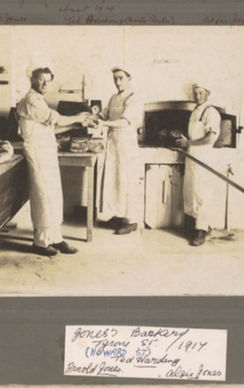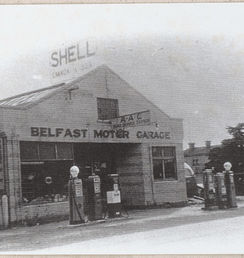Welcome to
BARA - Belfast Area Residents Association
A service provided by a dedicated voluntary group of Belfast Residents who are committed to growing a community that is safe, well-maintained, appealing, caring & respectful of each other.

Proud to live, work and play in Belfast
Belfast
The Northern Gateway to Christchurch
The township of Belfast is situated seven miles to the north of Christchurch, with which it is connected by a coach service and also by rail, the distance by the railway being nine miles. Belfast is surrounded by a rich agricultural district, occupied by farmers holding an average of about forty acres each, and growing chiefly oats, potatoes, and onions. Messrs Bealey Bros, were about the first to purchase land in the district, but they long ago sold their property, which is now cultivated in small holdings. The Church Property Trustees still hold a considerable area of the land, which is rented to farmers. Local industries, of great importance to Canterbuy, have helped Belfast ahead; such as the Belfast freezing works, the New Zealand Provision and Produce Company's soap and manure works, the Kaputone wool works, the oleo works, and Messrs Oppenheimer's works. There is also a butter factory and a creamery belonging to the Central Dairy Factory in the township. The local public schoool has accommodation for 320 scholars. The railway station is well situated between the township and the freezing works; and there is a branch line between the large brick buildings, with platforms at the different departments, for the purpose of facilitating the loading and unloading of sheep and cattle, and the various by-products of the works.
A Short History of Belfast, Christchurch - W.E Brown 16 July 1949
SETTLMENT OF THE TOWNSHIP & DISTRICT
Canterbury was a first divided up into Runs, over which the stock roamed at will. Boundaries between Runs were usually streams or other natural barriers. The area between the Waimakariri and the Styx Rivers was taken up in 1851 by Charles Turner, a butcher of Christchurch, and William Smart, a builder, also of Christchurch. In the late sixties, Smart sold his share to Turner, who subsequently took M.I. Joyce, another butcher, as a partner. The Homestead was at the bend of the Styx, near Chaneys Corner. Turner acquired the freehold of this part, and subsequently leased it to T & J Flack. Turners Read was named after this runholder, and the Homestead, or part of it, is probably comprised in a house now situated there.....
A Short History of Belfast as told by Ivan Halligan (1921 - 2007) inspired by the writings of WE Brown
Heslington - Belfast's Forgotten Neighbour


In 1882, two towns were established in what is now the Belfast area in northern Christchurch. One was Belfast, and the other was Heslington. Within 40 years, the Heslington town name was lost.
At time two developers described the two towns as: “Belfast is destined to become the leading suburban retreat for the gentry and future nobility of Canterbury” and “the Belfast soil cannot be excelled in NZ for quality”. Heslington was described as “better land than Belfast, and nearer to Christchurch”.
Where was Heslington? Highlighted in yellow, gives you an idea of the land area and the streets that now occupy the township.
The Heslington General Store (photographed 1900) was located on the corner of Johns Road and Main North Road (where the ‘Z’ Petrol Station & Burger King now stands).
Special acknowledgment and our sincere thank you to: Dennis & his late wife Helen Hills – the author’s passion for Belfast and the preservation of our district's history.
The Old Schoolmaster's House
665 Main North Road, Belfast
This was also the site of the Belfast School which came into being in 1878 with 38 pupils on the roll until it was relocated to its current site in 1938.
The Schoolmaster's House can claim to have been part of World War II scientific research. It was installed with a radio receiver to provide the "Radio Development Laboratory" with measurement data sent from the Arts Centre to calculate the best times to day and wave lengths for radio communication.
Hand crafted scale model of the Old Schoolmaster's House.
Built by Peter Bell a local Belfast resident, passionate about our history and was the night watchman at Canterbury Frozen Meat (now Silver Fern Farms) for many years.
Kindly lent to the CCC by Les McFadden QSM and is on display at the Fendalton Library 4 Jefferies Road, Fendalton under the care of our Waimāero Fendalton-Waimairi-Harewood Community Board
For Even More Information about the the Belfast School click on the link below to access a copy of "The Old SchoolMaster's House, Belfast" by Dennis & Helen Hills.

Archaeological excavations within the Pūharakekenu area have uncovered evidence of the pre-European Māori occupation of the area. During construction of the Christchurch Northern Corridor several ovens were uncovered. Works at Belfast cemetery and Guthries Road have also uncovered oven and midden sites. These ovens contained fire cracked rocks and faunal remains.
Background to Pre-European Settlement in Belfast:
The first people to live in the place now known as Christchurch were moa hunters, who probably arrived there as early as AD 1000. The hunters cleared large areas of mataī and tōtara forest by fire and by about 1450 the moa had been killed off.
North Island Māori (Ngati Māmoe and later Ngāi Tahu) arrived in Canterbury between 1500 and 1700. The remaining moa hunters were killed or taken into the tribes.
By 1800 the Ngāi Tūāhuriri sub-tribe of Ngāi Tahu were in control of the coast from the Hurunui River in the north to Lake Ellesmere in the south (Christchurch City Libraries, 2024).
The original Māori name of the Belfast area was first recorded on Blacks Maps as Purarekanui in 1856. James Herries Beattie would later record it as both Pouharakekenui and Pūharakekenui from different sources.
Beattie was a journalist and ethnographer who spent much of his life gathering place names and information from Māori elders, and it is likely that his spellings are more accurate with the differences being down to the regional dialects of his informants. The name translates roughly to ‘heaps of large flax’
Pūharakekenui is the names used by Ngāi Tahu today, and is the also the Māori name for Styx River. Pūharakekenui and its surrounding extensive network of wetlands and streams was an important kāinga mahinga kai (food-gathering place) for the local Ngāi Tahu hapū of Ngāi Tūāhuriri, with foods such as tuna (eels), kanakana (lampreys), and waikōura (freshwater crayfish) gathered from the river (Kā Huru Mana, 2024).
Kā Pūtahi is the correct spelling for Kaputone Creek — the northern tributary of Pūharakekenui (Styx River) in northern Christchurch. Kā Pūtahi was also an important mahinga kai.
Ōtūkaikino is the old southern branch of the Waimakariri River, and the name given to the wetland reserve north of Belfast. Traditionally, the Waimakariri was an unconstrained braided river that divided into two main channels; the main stem of the river, and the southern branch. When the lower reaches of the river were straightened in the early 20th century, the southern branch became a remnant of its former self. Ōtūkaikino was traditionally used by Ngāi Tūāhuriri as an important kāinga mahinga kai where tuna (eels), paraki (smelt), waharoa (horse mussel), inaka (whitebait), mata (juvenile whitebait), pātiki (flounder), aua (yellow-eyed mullet), pānako, kōkopu (native trout), and pipiki (smelt). Ōtūkaikino was also a rich hunting ground for bird life, including pūtakitaki (paradise duck), pārera (grey duck), raipo (New Zealand scaup), tataa/pāteke (brown teal), and totokipio (little grebe). Available plants included tutu, pora (‘Māori turnip’), aruhe (bracken fernroot), and kōrari (flower stalk of harakeke). The lower stretches of the Ōtūkaikino were traditionally used as an urupā, where bodies were embalmed (Kā Huru Mana, 2024).
Special Thanks to Sarah Erskine (our BARA Committee member) for preparing this article for us to enjoy.
Sarah is a New Zealand archaeologist and historian. She has a BA in anthropology, and PostGrad Diploma in biological anthropology and is currently completing a Masters of archaeology. Sarah has been working in the industry for over a decade now and am well versed in historical research, including archaeological building recording.
If you want to reach out to Sarah directly or have any history information to share feel free to contact her at: https://www.erskinearchaeology.com

Springs Grove, 12 Blakes Road, Belfast
The dwelling known as Spring Grove at 12 Blakes Road, Belfast, Christchurch, is a substantial late Victorian ‘Queen Anne’ villa built for proprietor of the Kaputone Wool Scouring Company, William Nicholls, and his wife, Sarah, in circa 1896. It reflects the taste and lifestyle of a notable businessman and his family in the late nineteenth and early twentieth century and has long been associated with the stock processing industry, which was critical in Belfast’s development. The dwelling has historical, social, cultural, aesthetic and architectural significance. Welcome to Heritage New Zealand
Belfast Museum, 665 Main North Rd, Belfast
The Belfast District Museum is the small garage looking building to the right of the old Schoolmasters House. It was constructed by local people in 1985, and the building was opened in October of that year by Margaret Murray, Chairman of the Waimairi District Council. The front of the building was constructed to be in keeping with the historic schoolmaster's house which had been built more than a century earlier, in 1878. Styx History Group, Canterbury - Styx/Belfast District and Family History
Ben Johns
The first settlement to Belfast was in 1856. In 1877 Mr Johns purchased 50 acres of good, heavy pastoral and agricultural land in Belfast. He would ride to Nelson and drive (on horseback) his stock back to Belfast. In 1891 he built his homestead and called it Devonvale after his home country. A very impressive two storied house on the corner of Johns road and Main North Rd, and there he raised his family of nine children.
Mr Johns and his son James started dairy farming and had their own treating house in which they produced the first pasteurised milk in Christchurch, if not the South island.
Belfast has been a very busy place in trades related to farming. First, there was Moir's flour mill on the Styx, then Watt's boiling down works. On the land behind the railway station stood Nicholl's woolwash; the NZ farmers' fertiliser works' the C.F.M Company's Belfast freezing works, which started in 1882 was the second such works in NZ.
Our Video Gallery
Our Photo Gallery
History of Belfast
Links to Chats:
12 Blakes Road, Belfast
https://www.facebook.com/groups/rememberingchristchurchnz/posts/1279325382582605































